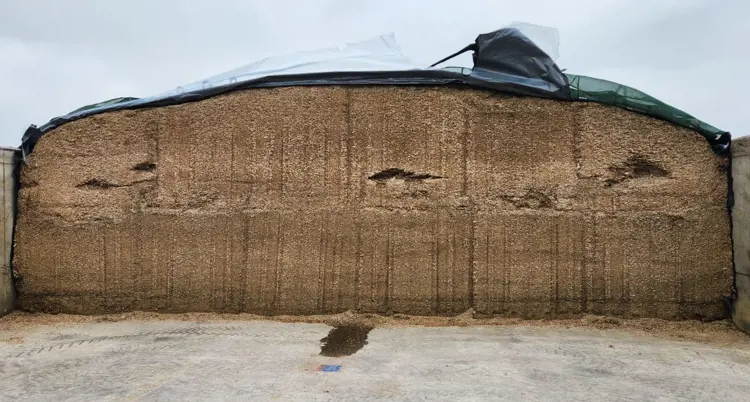Maximizing Silage Quality: Top tips for perfect face management
Silage face management is an essential practice for farmers aiming to preserve the quality of their silage and minimize dry matter (DM) losses. A properly managed silage face reduces oxygen exposure, which is key to preventing spoilage and maintaining the nutritional value of the feed. In this article, we discuss why face management is crucial and provide practical steps farmers can take to optimize the silage face, reduce losses, and improve silage quality

The Importance of Silage Face Management
Silage face management directly impacts silage's nutritional value and efficiency as animal feed. When exposed to oxygen, aerobic microorganisms such as yeast begin breaking down lactic acid, causing an increase in pH. This higher pH allows spoilage organisms, including undesirable fungi and bacteria, to thrive, leading to substantial DM losses. The goal of silage face management is to limit oxygen exposure, thereby preventing spoilage processes and reducing losses.
Benefits of Proper Silage Face Management
1. Minimized oxygen exposure: A well-managed silage face reduces the surface area exposed to oxygen, effectively preventing spoilage and maintaining silage quality.
2. Reduced DM losses: Without proper face management, farmers can experience up to 10% DM losses. Equipment plays a role, too. Using equipment like a face shaver can reduce these losses by approximately 3% compared to using front-end loaders.
3. Prevention of avalanches: A smooth, perpendicular silage face reduces the risk of avalanches, which can cause further spoilage and silage loss.
4. Prevention of water accumulation: Proper management ensures that water does not collect on the silage face during wet conditions, helping to prevent spoilage.
How to manage the silage face
1. Maintain a smooth, perpendicular surface:
Ensure the silage face is smooth and vertical to minimize oxygen exposure. A smooth face limits air penetration and helps prevent spoilage. Avoid lifting silage from the bottom of the pile with a front-end loader, as this introduces oxygen. Instead, remove silage evenly across the width of the face (left to right) to ensure consistent removal and reduce spoilage.
2. Ensure consistent feed-out progression
In colder months, remove silage at a rate of 15–30 cm per day to limit oxygen exposure. Cooler temperatures help maintain silage stability. In warmer months, increase the feed-out rate to 45 cm per day to maintain silage quality. A smaller face may be necessary in summer when silage usage slows. Consider the impact of a smaller face during the summertime when silage usage may decrease.
The level of compaction of the silage pit will also influence the feed-out rate. Poor compaction allows for oxygen penetration deeper into the pit. This will increase feed-out rates, regardless of the season. Consistent removal is crucial to prevent air from penetrating the pit, which can lead to spoilage and heating.
3. Minimize exposure of loose silage
Loose silage that sits at the base of the silage face is exposed to oxygen and can heat up and undergo secondary fermentation, resulting in further spoilage. To prevent this:
• Remove silage multiple times a day.
• Avoid leaving silage exposed for extended periods before feeding.
• Minimize leftover silage at the base of the face after feeding.
• Promptly discard spoiled silage, as it reduces nutritional value and negatively impacts animal performance.
4. Properly manage the cover
Remove no more than three days' worth of cover at a time to limit prolonged exposure to oxygen. This will also help prevent birds and pests from damaging silage stores. Discard spoiled or moldy silage promptly to avoid affecting the overall quality of the feed. Spoiled silage can negatively impact animal intake and digestibility. Consider sealing edges with sandbags or gravel to further prevent oxygen penetration. Repair holes in the plastic covering immediately. If the damage is extensive, re-cover the pit.
Proper silage face management is essential for maintaining high-quality feed and minimizing losses in dry matter. By following best practices, farmers can optimize their silage production, improve animal performance, and reduce feed costs. Investing time and effort into managing the silage face will ultimately pay off by preserving the nutritional integrity of the feed and minimizing spoilage and losses.

Contact your local De Heus technical advisor to help you maximizing your silage quality on farm - https://www.deheus.co.za/meet-our-team/.
